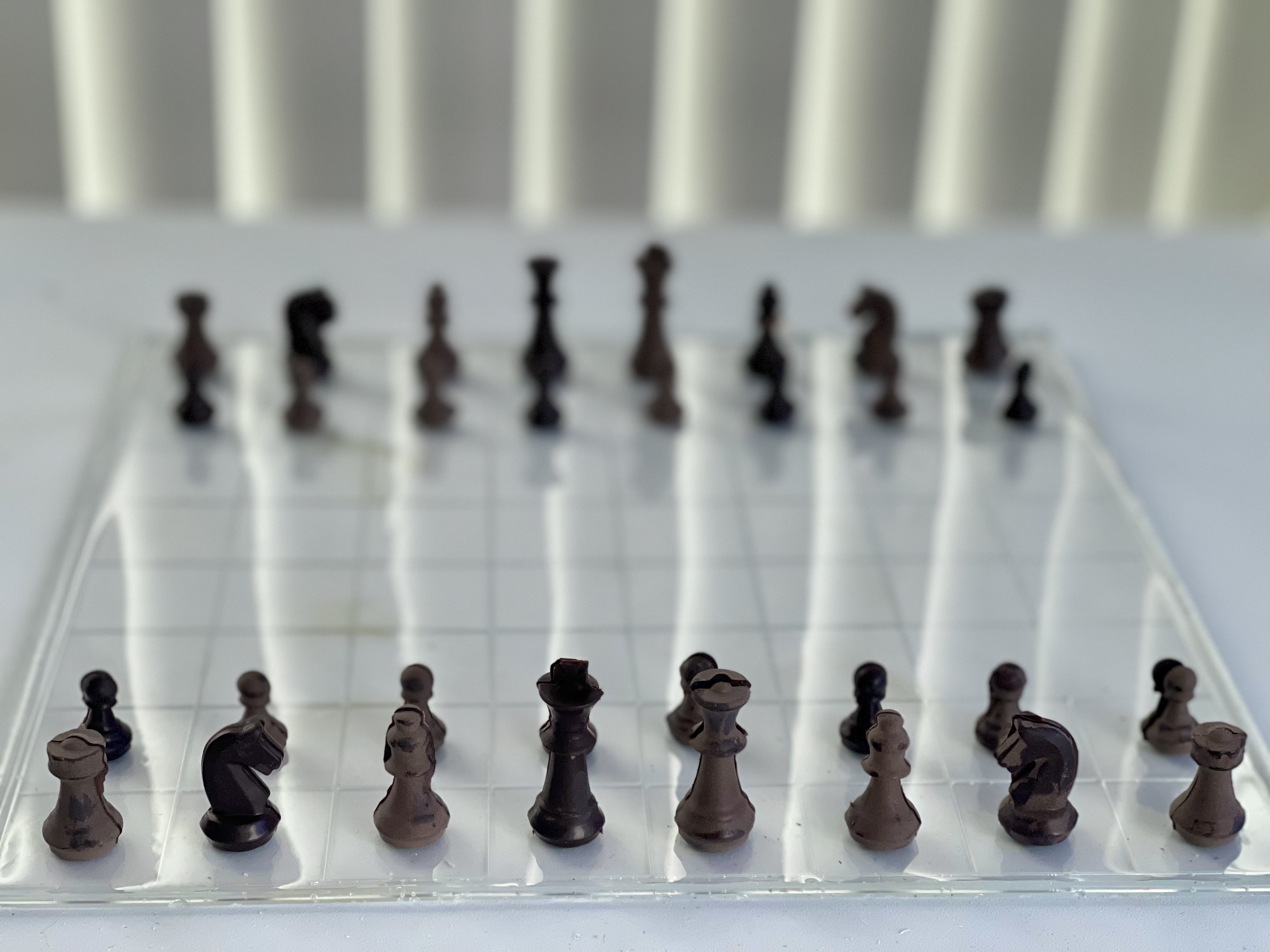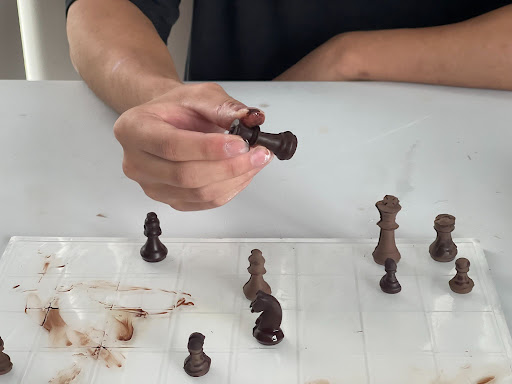Chocolate Chess is a chess set with a solid white board, and all of its pieces are made out of 95%-cocoa bitter dark chocolate. Unlike traditional chess, the game requires the player to eat the piece instead of capturing it. After eating the bitter chocolate piece, the player has to wipe the melted chocolate from their fingers onto the white board.


I hope that after playing this game, the players will see the destroyed game board, taste the bitterness in their mouths, and realize that there are no winners in this game. Despite the rather frustrating experience, Chocolate Chess offers a more realistic representation of war than traditional chess.
